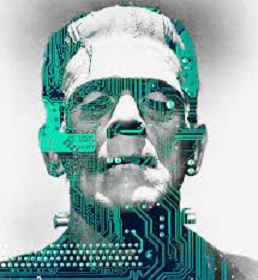
Excavations at the Jebel Irhoud archaeological site in Morocco, where 300,000-year-old fossils that may be the oldest evidence of Homo sapiens were found in 2017. Credit…Shannon McPherron/UPI, via Alamy
Dear Commons Community,
Carl Zimmer, a columnist, for The New York Times, had an article yesterday reporting that a new genetic analysis of 290 people suggests that humans emerged at various times and places in Africa and not in one single locale as has long been believed. Here is an excerpt:
“By analyzing the genomes of 290 living people, researchers concluded that modern humans descended from at least two populations that coexisted in Africa for a million years before merging in several independent events across the continent. The findings were published on Wednesday in Nature. [The Nature article is quite interesting and provides further details on what Zimmer is reporting.]
“There is no single birthplace,” said Eleanor Scerri, an evolutionary archaeologist at the Max Planck Institute for Geoarchaeology in Jena, Germany, who was not involved in the new study. “It really puts a nail in the coffin of that idea.”
Paleoanthropologists and geneticists have found evidence pointing to Africa as the origin of our species. The oldest fossils that may belong to modern humans, dating back as far as 300,000 years, have been unearthed there. So were the oldest stone tools used by our ancestors.
Human DNA also points to Africa. Living Africans have a vast amount of genetic diversity compared with other people. That’s because humans lived and evolved in Africa for thousands of generations before small groups — with comparatively small gene pools — began expanding to other continents.
Within the vast expanse of Africa, researchers have proposed various places as the birthplace of our species. Early humanlike fossils in Ethiopia led some researchers to look to East Africa. But some living groups of people in South Africa appeared to be very distantly related to other Africans, suggesting that humans might have a deep history there instead.
Brenna Henn, a geneticist at the University of California, Davis, and her colleagues developed software to run large-scale simulations of human history. The researchers created many scenarios of different populations existing in Africa over different periods of time and then observed which ones could produce the diversity of DNA found in people alive today.
“We could ask what types of models are really plausible for the African continent,” Dr. Henn said.
The researchers analyzed DNA from a range of African groups, including the Mende, farmers who live in Sierra Leone in West Africa; the Gumuz, a group descended from hunter-gatherers in Ethiopia; the Amhara, a group of Ethiopian farmers; and the Nama, a group of hunter-gatherers in South Africa.
The researchers compared these Africans’ DNA with the genome of a person from Britain. They also looked at the genome of a 50,000-year-old Neanderthal found in Croatia. Previous research had found that modern humans and Neanderthals shared a common ancestor that lived 600,000 years ago. Neanderthals expanded across Europe and Asia, interbred with modern humans coming out of Africa, and then became extinct about 40,000 years ago.
The researchers concluded that as far back as a million years ago, the ancestors of our species existed in two distinct populations. Dr. Henn and her colleagues call them Stem1 and Stem2.
About 600,000 years ago, a small group of humans budded off from Stem1 and went on to become the Neanderthals. But Stem1 endured in Africa for hundreds of thousands of years after that, as did Stem2.
If Stem1 and Stem2 had been entirely separate from each other, they would have accumulated a large number of distinct mutations in their DNA. Instead, Dr. Henn and her colleagues found that they had remained only moderately different — about as distinct as living Europeans and West Africans are today. The scientists concluded that people had moved between Stem1 and Stem2, pairing off to have children and mixing their DNA.
The model does not reveal where the Stem1 and Stem2 people lived in Africa. And it’s possible that bands of these two groups moved around a lot over the vast stretches of time during which they existed on the continent. About 120,000 years ago, the model indicates, African history changed dramatically.”
This study changes a long held belief about human evolution!
Below is the entire article.
Tony
——————————————————————
The New York Times
Study Offers Twist in How the First Humans Evolved
By Carl Zimmer
Published May 17, 2023. Updated May 24, 2023
Scientists have revealed a surprisingly complex origin of our species, rejecting the long-held argument that modern humans arose from one place in Africa during one period in time.
By analyzing the genomes of 290 living people, researchers concluded that modern humans descended from at least two populations that coexisted in Africa for a million years before merging in several independent events across the continent. The findings were published on Wednesday in Nature.
“There is no single birthplace,” said Eleanor Scerri, an evolutionary archaeologist at the Max Planck Institute for Geoarchaeology in Jena, Germany, who was not involved in the new study. “It really puts a nail in the coffin of that idea.”
Paleoanthropologists and geneticists have found evidence pointing to Africa as the origin of our species. The oldest fossils that may belong to modern humans, dating back as far as 300,000 years, have been unearthed there. So were the oldest stone tools used by our ancestors.
Human DNA also points to Africa. Living Africans have a vast amount of genetic diversity compared with other people. That’s because humans lived and evolved in Africa for thousands of generations before small groups — with comparatively small gene pools — began expanding to other continents.
Within the vast expanse of Africa, researchers have proposed various places as the birthplace of our species. Early humanlike fossils in Ethiopia led some researchers to look to East Africa. But some living groups of people in South Africa appeared to be very distantly related to other Africans, suggesting that humans might have a deep history there instead.
Brenna Henn, a geneticist at the University of California, Davis, and her colleagues developed software to run large-scale simulations of human history. The researchers created many scenarios of different populations existing in Africa over different periods of time and then observed which ones could produce the diversity of DNA found in people alive today.
“We could ask what types of models are really plausible for the African continent,” Dr. Henn said.
The researchers analyzed DNA from a range of African groups, including the Mende, farmers who live in Sierra Leone in West Africa; the Gumuz, a group descended from hunter-gatherers in Ethiopia; the Amhara, a group of Ethiopian farmers; and the Nama, a group of hunter-gatherers in South Africa.
The researchers compared these Africans’ DNA with the genome of a person from Britain. They also looked at the genome of a 50,000-year-old Neanderthal found in Croatia. Previous research had found that modern humans and Neanderthals shared a common ancestor that lived 600,000 years ago. Neanderthals expanded across Europe and Asia, interbred with modern humans coming out of Africa, and then became extinct about 40,000 years ago.
The researchers concluded that as far back as a million years ago, the ancestors of our species existed in two distinct populations. Dr. Henn and her colleagues call them Stem1 and Stem2.
About 600,000 years ago, a small group of humans budded off from Stem1 and went on to become the Neanderthals. But Stem1 endured in Africa for hundreds of thousands of years after that, as did Stem2.
If Stem1 and Stem2 had been entirely separate from each other, they would have accumulated a large number of distinct mutations in their DNA. Instead, Dr. Henn and her colleagues found that they had remained only moderately different — about as distinct as living Europeans and West Africans are today. The scientists concluded that people had moved between Stem1 and Stem2, pairing off to have children and mixing their DNA.
The model does not reveal where the Stem1 and Stem2 people lived in Africa. And it’s possible that bands of these two groups moved around a lot over the vast stretches of time during which they existed on the continent. About 120,000 years ago, the model indicates, African history changed dramatically.
In southern Africa, people from Stem1 and Stem2 merged, giving rise to a new lineage that would lead to the Nama and other living humans in that region. Elsewhere in Africa, a separate fusion of Stem1 and Stem2 groups took place. That merger produced a lineage that would give rise to living people in West Africa and East Africa, as well as the people who expanded out of Africa.
It’s possible that climate upheavals forced Stem1 and Stem2 people into the same regions, leading them to merge into single groups. Some bands of hunter-gatherers may have had to retreat from the coast as sea levels rose, for example. Some regions of Africa became arid, potentially sending people in search of new homes.
Even after these mergers 120,000 years ago, people with solely Stem1 or solely Stem2 ancestry appear to have survived. The DNA of the Mende people showed that their ancestors had interbred with Stem2 people just 25,000 years ago. “It does suggest to me that Stem2 was somewhere around West Africa,” Dr. Henn said.
She and her colleagues are now adding more genomes from people in other parts of Africa to see if they affect the models.
It’s possible they will discover other populations that endured in Africa for hundreds of thousands of years, ultimately helping produce our species as we know it today.
Dr. Scerri speculated that living in a network of mingling populations across Africa might have allowed modern humans to survive while Neanderthals became extinct. In that arrangement, our ancestors could hold onto more genetic diversity, which in turn might have helped them endure shifts in the climate, or even evolve new adaptations.
“This diversity at the root of our species may have been ultimately the key to our success,” Dr. Scerri said.













